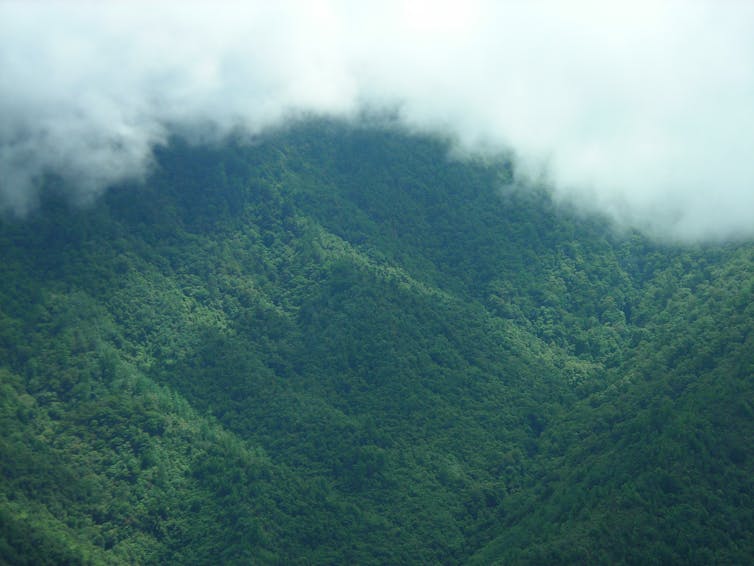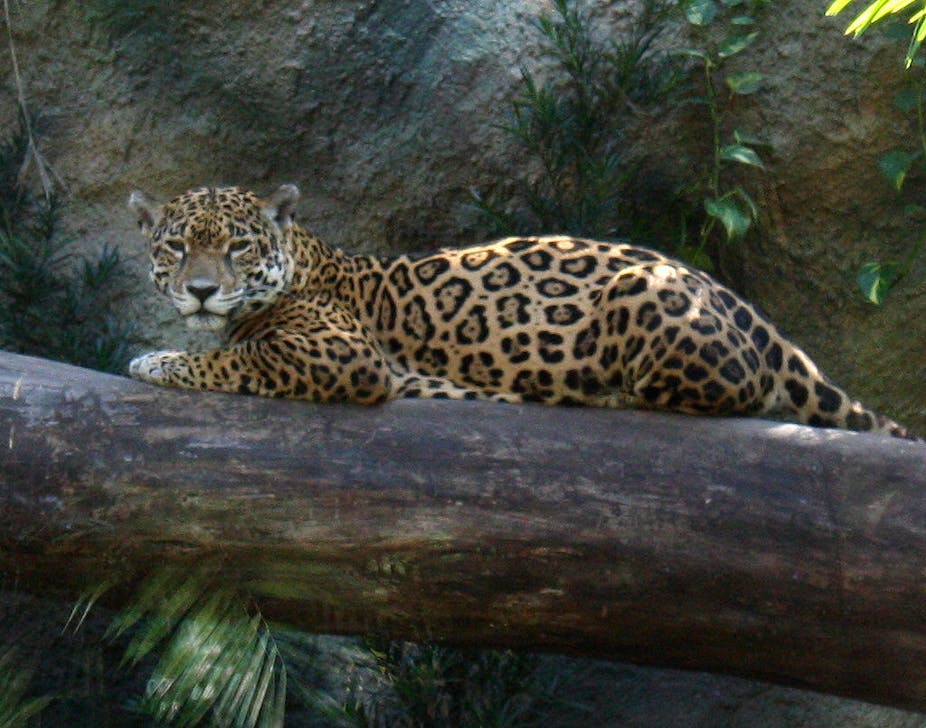The chances of being roared at by a jaguar in a Mexican cloud forest are already low, but that is precisely what happened to me during a recent fieldwork expedition. I was very lucky to see a jaguar close up: such species are under extreme peril due to the risk that climate change poses to their habitat.
The Mexican cloud forest is one of the most vulnerable ecosystems in the entire world. Tropical montane cloud forests are spectacular and atmospheric places. They typically occur between 2000 and 3500 metres above sea level and are usually formed by small trees and a high proportion of epiphytes, including bryophytes, lichens, ferns, mosses and orchids.
The plants in the canopy have adapted to “extract” water directly from the clouds through so-called “horizontal precipitation”. Small water droplets from the cloud water condense on the leaves and branches, and either run or drop to the ground.
Natural changes in climate over thousands of years have caused expansions and contractions of the forest fragments. During expansions, animals and plants were able to disperse between patches. During contractions, fragments became isolated and new species evolved.

Because of such dynamism, cloud forests contain high concentrations of floral and faunal diversity. Mexican cloud forest comprises only 1% of Mexico, yet harbours 10% of all Mexican plants. Thirty percent of all the flowering plants in the Mexican cloud forests are endemic to that ecosystem.
Tropical montane cloud forest in Mexico has existed since well before the earliest human occupation in Mesoamerica, approximately 20,000 years ago. Records of human use of cloud forest and its resources date back to pre-Columbian civilisations.
Cloud forests were a major centre of agricultural production crucial to the flourishing of Mesoamerican culture, where plants such as corn, beans, peppers and tobacco were domesticated. Many animal products were also extracted, such as quetzal feathers for fine Aztec head dresses.

About 90% of Mexico’s cloud forest has already been cleared by people for cropping or grazing areas, firewood, and extraction of natural resources. The forests that remain are fragmented and isolated remnants of the original forest.
Tropical montane cloud forests also depend on a very specific set of climatic conditions. There is emerging concern that human-induced climate change could greatly imperial an already-degraded ecosystem in the near future.
The research for my PhD revealed that human-induced climate change could have devastating effects on Mexico’s cloud forests. My models predict that by 2080, 68% of the area that currently contains cloud forest will become climatically unsuitable for this vegetation type. Additionally, while 12% of Mexican cloud forest currently occurs within a protected area, 90% of those protected lands will soon become climatically unsuitable.
To put it bluntly, protected areas are in the wrong places. If we assume that all unprotected forest is cleared in the future, 99% of the entire ecosystem could be lost through a combination of climate change and habitat clearance. Ecological theory tells us that this magnitude of habitat loss would result in extinction of about 70% of Mexico’s endemic cloud forest vertebrate species.

Clearly, immediate action is required to avert this disaster, and an urgent priority is to extend the protected area system to areas of low climatic vulnerability.
But why is this relevant to Australia?
Mountaintop rainforests in the Australian wet tropics experience similar climatic conditions to the Mexican cloud forest. They are isolated “islands” of unique vegetation adapted to cooler and temperate climates. They shelter highly specialised flora and unique fauna that does not occur anywhere else in the world.
Unlike Mexico, these forests are protected against clearing, leaving climate change as the only remaining significant threat.
If the concentration of greenhouse gases is not reduced in coming years, montane ecosystems are unlikely to survive in their present form with anything near their present diversity.
A close encounter with a jaguar in the montane forests of Mexico will become a thing of the past.

